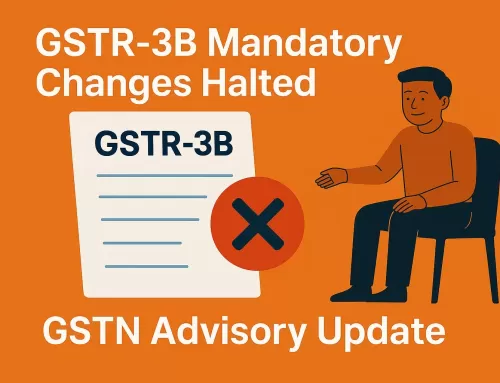Guide to GST’s New Invoice Management System (IMS)
In a significant leap forward for the Goods and Services Tax (GST) ecosystem, the GST Common Portal has introduced the Invoice Management System (IMS). This innovative feature, available from October 2024, is set to transform the way taxpayers manage their invoices and ensure greater accuracy and efficiency in GST compliance. This comprehensive guide will delve into the details of IMS, its features, implementation, and how it benefits taxpayers.
What is the Invoice Management System (IMS)?
The IMS is a new communication process designed to help taxpayers efficiently address invoice corrections and amendments with their suppliers through the GST portal. This system facilitates the matching of records and invoices issued by suppliers, enabling taxpayers to avail the correct Input Tax Credit (ITC). With IMS, recipient taxpayers can accept, reject, or keep invoices pending in the system for future action.
Key Features of IMS
- Seamless Invoice Management: Taxpayers can now accept, reject, or keep invoices pending, streamlining the reconciliation process and ensuring accurate GST compliance.
- Enhanced ITC Matching: The system helps in matching records with suppliers’ invoices, ensuring the correct ITC is availed.
- Time and Resource Efficiency: By reducing errors and automating parts of the process, IMS saves valuable time and resources for businesses.
- Optional Use: Initially, the use of IMS is optional, allowing taxpayers to familiarize themselves with the system before it becomes a standard practice.
Implementation Timeline
- October 1, 2024: IMS becomes available on the GST portal.
- October 14, 2024: Taxpayers can start taking action on invoices through IMS.
- November 14, 2024: The first GSTR-2B will be generated based on actions taken in IMS for the October 2024 period.
How IMS Works
Taxpayers can take the following actions on invoices through IMS:
- Accept: Confirm the invoice details and avail the ITC.
- Reject: Dispute the invoice details, which will prevent the ITC from being availed.
- Keep Pending: Delay the decision on the invoice, allowing for further verification before taking action.
The system also includes a “Supplier View” functionality, enabling suppliers to see the actions taken by recipients on their reported outward supplies. This transparency helps avoid any incorrect actions and ensures smooth reconciliation.
Detailed Breakdown of IMS Features
- Seamless Invoice Management:
- Acceptance of Invoices: When a taxpayer accepts an invoice, it means they agree with the details provided by the supplier. This action will allow the taxpayer to claim the ITC associated with that invoice.
- Rejection of Invoices: If there are discrepancies or errors in the invoice, the taxpayer can reject it. This action will prevent the ITC from being claimed until the issue is resolved.
- Pending Invoices: Taxpayers can keep invoices pending if they need more time to verify the details. This flexibility ensures that taxpayers can thoroughly check the invoices before making a decision.
- Enhanced ITC Matching:
- Record Matching: IMS facilitates the matching of invoices issued by suppliers with the records maintained by the taxpayers. This ensures that the ITC claimed is accurate and based on verified transactions.
- Error Reduction: By automating the matching process, IMS reduces the chances of errors that can occur during manual reconciliation. This leads to more accurate GST returns and compliance.
- Time and Resource Efficiency:
- Automation: The automation of invoice management processes saves time for businesses, allowing them to focus on other critical aspects of their operations.
- Resource Optimization: By reducing the need for manual intervention, IMS helps businesses optimize their resources, leading to cost savings and improved efficiency.
- Optional Use:
- Familiarization Period: The optional use of IMS during its initial phase allows taxpayers to get accustomed to the new system. This period helps businesses understand the functionalities and benefits of IMS before it becomes mandatory.
Benefits of IMS for Taxpayers
- Improved Compliance: IMS ensures that taxpayers can accurately reconcile their invoices, leading to better compliance with GST regulations.
- Reduced Errors: The automated matching and verification processes reduce the likelihood of errors in GST returns.
- Time Savings: By streamlining invoice management, IMS saves time for businesses, allowing them to focus on growth and development.
- Transparency: The “Supplier View” functionality promotes transparency between suppliers and recipients, fostering better business relationships.
FAQs and Support
To assist taxpayers in understanding and using IMS, the GST portal provides detailed manuals and FAQs. These resources offer comprehensive guidance on how to navigate the new system and make the most of its features.
For more detailed information, please refer to the official GST portal here.
Conclusion
The introduction of the Invoice Management System marks a significant advancement in the GST framework, promising to enhance the accuracy and efficiency of GST compliance. By streamlining the invoice management process, IMS not only simplifies the reconciliation of records but also ensures that businesses can avail the correct ITC with ease. TaxPower GST software is the capability of handling Invoice Management Systems. You can manage the invoices through TaxPower GST by Accept, Reject and Keep Pending options.
Explore our other blogs: https://taxpowergst.com/blog/
Blog Ref: GSTN Government Site




